| Ligne 22 : | Ligne 22 : | ||
This projects takes the PPP to a smaller scale, where we will be charging a computer. In order to demonstrate the accessibility, we're construction the device in a remote town in Sweden, Torsby. | This projects takes the PPP to a smaller scale, where we will be charging a computer. In order to demonstrate the accessibility, we're construction the device in a remote town in Sweden, Torsby. | ||
| − | |||
| − | |||
}} | }} | ||
{{ {{tntn|Materials}} | {{ {{tntn|Materials}} | ||
| Ligne 43 : | Ligne 41 : | ||
}} | }} | ||
{{ {{tntn|Separator}}}} | {{ {{tntn|Separator}}}} | ||
| + | {{ {{tntn|Tuto Step}} | ||
| + | |Step_Title=People Pedal Power | ||
| + | |Step_Content=To find out more about People Pedal Power, visit our site https://ciklic.wordpress.com/2017/08/05/renewable-energy-what-can-you-expect/ | ||
| + | }} | ||
| + | {{ {{tntn|Tuto Step}} | ||
| + | |Step_Title=Overview | ||
| + | |Step_Content= | ||
| + | }} | ||
| + | {{ {{tntn|Tuto Step}} | ||
| + | |Step_Title=Charging : adapting to the computer voltage | ||
| + | |Step_Content=The aim of the people pedal power is to charge a computer. A computer battery is normally charges by an adapter that converts AC mains power to DC power. This charger will be only for YOUR computer. | ||
| + | |||
| + | Be informed : | ||
| + | |||
| + | - we want to charge with the same power as the adapter does | ||
| + | |||
| + | Check the voltage and the current at which the adapter charges your computer. Mine charges at 20V and 4.5A. | ||
| + | |||
| + | - you will be cutting your power cable | ||
| + | |||
| + | You can also chose to buy the plug separately and assemble a new cable. | ||
| + | }} | ||
| + | {{ {{tntn|Tuto Step}} | ||
| + | |Step_Title=Conversion : messy DC power to flat DC voltage | ||
| + | |Step_Content= | ||
| + | }} | ||
{{ {{tntn|Tuto Step}} | {{ {{tntn|Tuto Step}} | ||
|Step_Picture_00=People_pedal_powered_computer_charger_IMG_0167.jpg | |Step_Picture_00=People_pedal_powered_computer_charger_IMG_0167.jpg | ||
|Step_Picture_01=People_pedal_powered_computer_charger_axle_not_work_2.jpg | |Step_Picture_01=People_pedal_powered_computer_charger_axle_not_work_2.jpg | ||
| − | |Step_Picture_02= | + | |Step_Picture_02=People_pedal_powered_computer_charger_axe_not_work_1.jpg |
|Step_Title=Bicycle : human energy to mechanical energy | |Step_Title=Bicycle : human energy to mechanical energy | ||
|Step_Content=The fist etape is the conversion of the human energy to slow-rotating mechanical energy. We are using an ordinary bicycle to harvest the energy. | |Step_Content=The fist etape is the conversion of the human energy to slow-rotating mechanical energy. We are using an ordinary bicycle to harvest the energy. | ||
| Ligne 54 : | Ligne 78 : | ||
- your bike should have low-profile tires | - your bike should have low-profile tires | ||
| − | When the profile is too important | + | When the profile is too important (see picture) there will be a large energy loss due to vibrations. You will also have more noise when pedaling. |
- the fixation of the axis should be not of the fast-release type | - the fixation of the axis should be not of the fast-release type | ||
| − | The fast-release-type with flat end is often not compatible with the bike stands. You can easily change the axle with another (second hand) axle. | + | The fast-release-type with flat end (se picture) is often not compatible with the bike stands. You can easily change the axle with another (second hand) axle. |
}} | }} | ||
{{ {{tntn|Tuto Step}} | {{ {{tntn|Tuto Step}} | ||
| − | |Step_Title=Bicycle stand : | + | |Step_Title=Bicycle stand : |
|Step_Content= | |Step_Content= | ||
| + | }} | ||
| + | {{ {{tntn|Tuto Step}} | ||
| + | |Step_Title=Roller : slow- to fast-rotation mechanical energy | ||
| + | |Step_Content=The second etape is converting the slow-turning mechanical energy of the bicycle wheel to a fast-turning mechanical energy. Electric generators like high speeds. | ||
}} | }} | ||
{{ {{tntn|Tuto Step}} | {{ {{tntn|Tuto Step}} | ||
Version du 16 novembre 2017 à 11:21
Sommaire
- 1 Introduction
- 2 Étape 1 - People Pedal Power
- 3 Étape 2 - Overview
- 4 Étape 3 - Charging : adapting to the computer voltage
- 5 Étape 4 - Conversion : messy DC power to flat DC voltage
- 6 Étape 5 - Bicycle : human energy to mechanical energy
- 7 Étape 6 - Bicycle stand :
- 8 Étape 7 - Roller : slow- to fast-rotation mechanical energy
- 9 Étape 8 - Generator : mechanical to electric energy
- 10 Étape 9 - Conversion : messy DC power to flat DC voltage
- 11 Étape 10 - Charging : adapting to the computer voltage
- 12 Commentaires
Introduction
The project Vélo M2 plays with PPP (people pedal power) applications. In Brussels we're having PPP open-air cinéma projections, PPP mobile fablab workshops and PPP music scenes and DJ sets. [www.velom2.be www.velom2.be]
This projects takes the PPP to a smaller scale, where we will be charging a computer. In order to demonstrate the accessibility, we're construction the device in a remote town in Sweden, Torsby.Étape 1 - People Pedal Power
To find out more about People Pedal Power, visit our site https://ciklic.wordpress.com/2017/08/05/renewable-energy-what-can-you-expect/
Étape 2 - Overview
Étape 3 - Charging : adapting to the computer voltage
The aim of the people pedal power is to charge a computer. A computer battery is normally charges by an adapter that converts AC mains power to DC power. This charger will be only for YOUR computer.
Be informed :
- we want to charge with the same power as the adapter does
Check the voltage and the current at which the adapter charges your computer. Mine charges at 20V and 4.5A.
- you will be cutting your power cable
You can also chose to buy the plug separately and assemble a new cable.
Étape 4 - Conversion : messy DC power to flat DC voltage
Étape 5 - Bicycle : human energy to mechanical energy
The fist etape is the conversion of the human energy to slow-rotating mechanical energy. We are using an ordinary bicycle to harvest the energy.
Think about this :
- your bike should have low-profile tires
When the profile is too important (see picture) there will be a large energy loss due to vibrations. You will also have more noise when pedaling.
- the fixation of the axis should be not of the fast-release type
The fast-release-type with flat end (se picture) is often not compatible with the bike stands. You can easily change the axle with another (second hand) axle.
Étape 6 - Bicycle stand :
Étape 7 - Roller : slow- to fast-rotation mechanical energy
The second etape is converting the slow-turning mechanical energy of the bicycle wheel to a fast-turning mechanical energy. Electric generators like high speeds.
Étape 8 - Generator : mechanical to electric energy
Étape 9 - Conversion : messy DC power to flat DC voltage
Étape 10 - Charging : adapting to the computer voltage
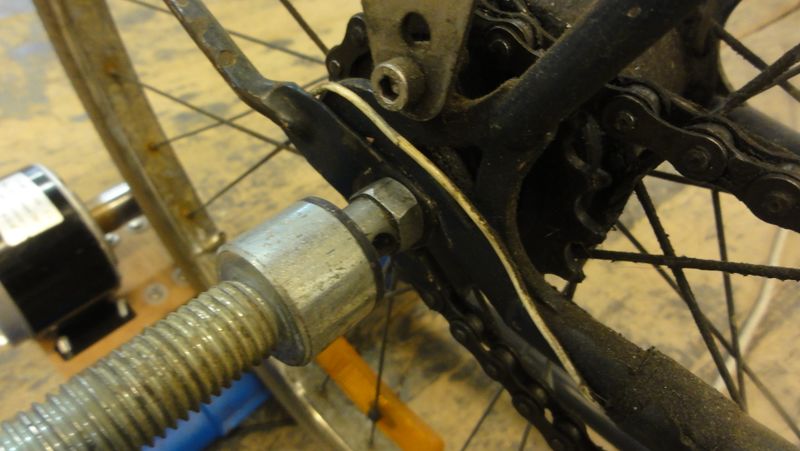
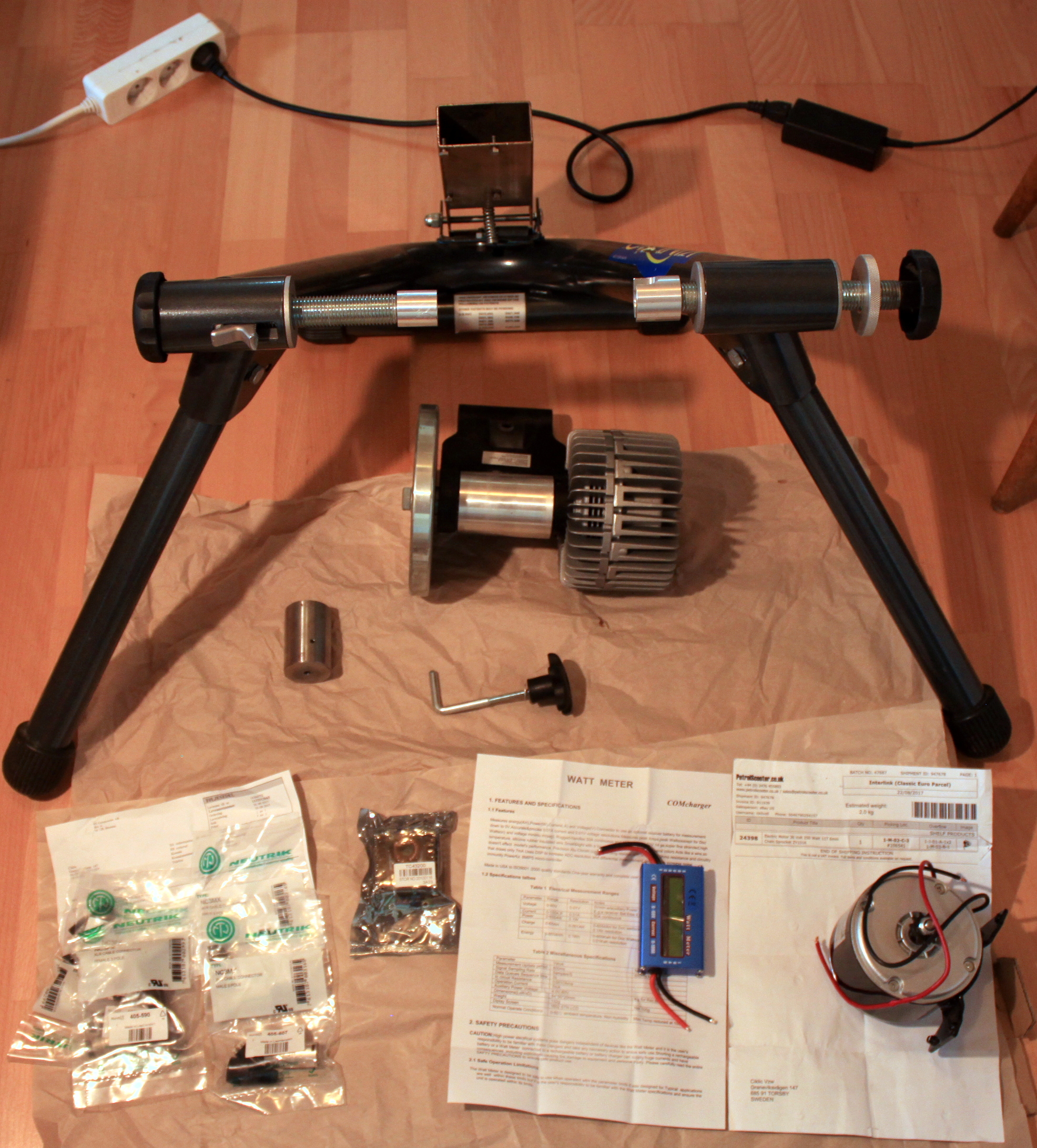
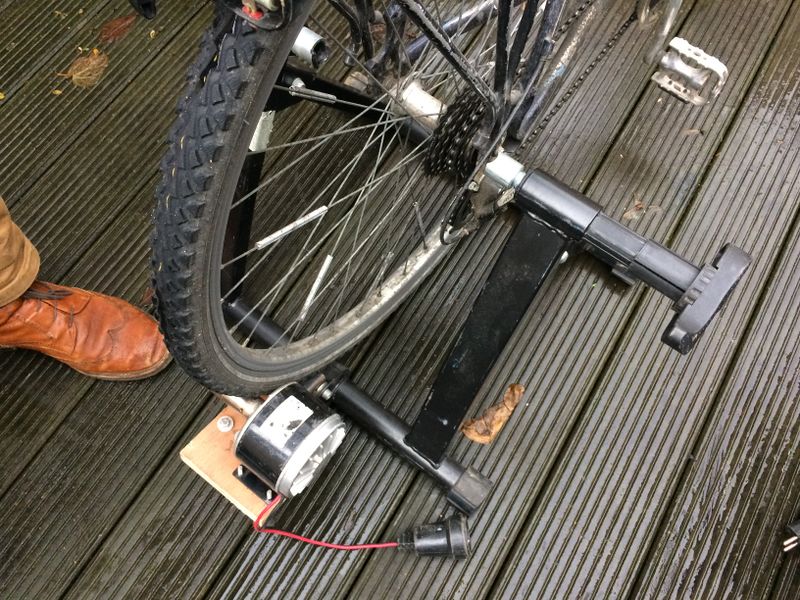
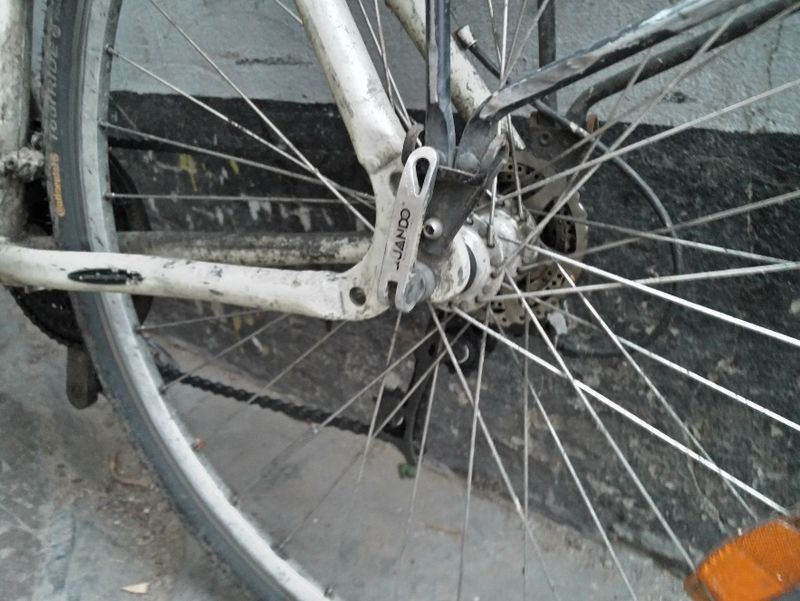
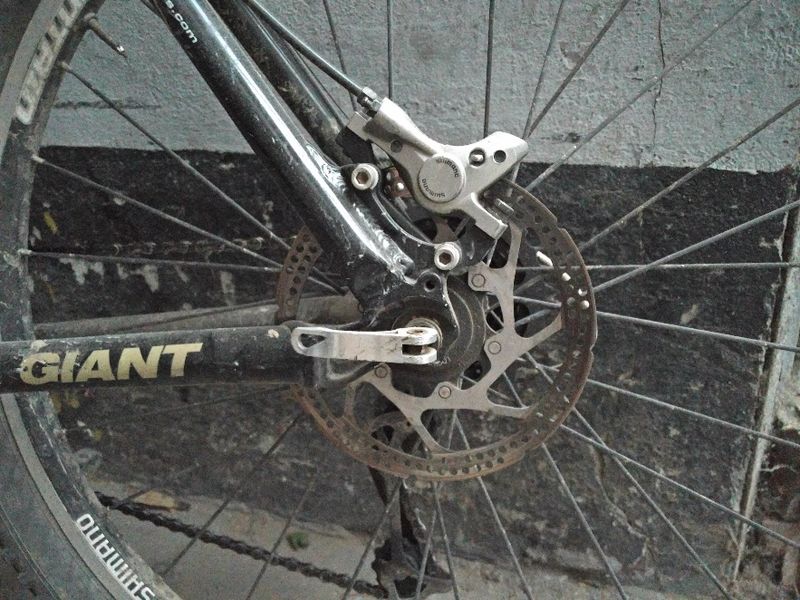
 Français
Français English
English Deutsch
Deutsch Español
Español Italiano
Italiano Português
Português